Over the past year, Valva and I have started a journey to live a fully plastic-free life.
It has been a trying journey. If you’re one of those people who have ever tried to eliminate plastic from your life, you probably already know how hard this is to accomplish. Plastic is literally EVERYWHERE in our lives. From the groceries we buy, to the tools we use every day, and everything in between.
While it’s complex, it’s not impossible to achieve. The key is taking small steps.
Why Go Plastic-Free
Before we talk about some of the things we’ve been doing to remove all plastics from our lives, it’s important to understand why we decided to take on this endeavor.
We could tell you why with facts and statistics, but we thought a story would help get a better picture of our plastic situation in our world.
Our plastic situation
Imagine you own a beautiful 5-bedroom house by the beach. To make things even better, you have a small lake in your backyard with some fish and other animals.
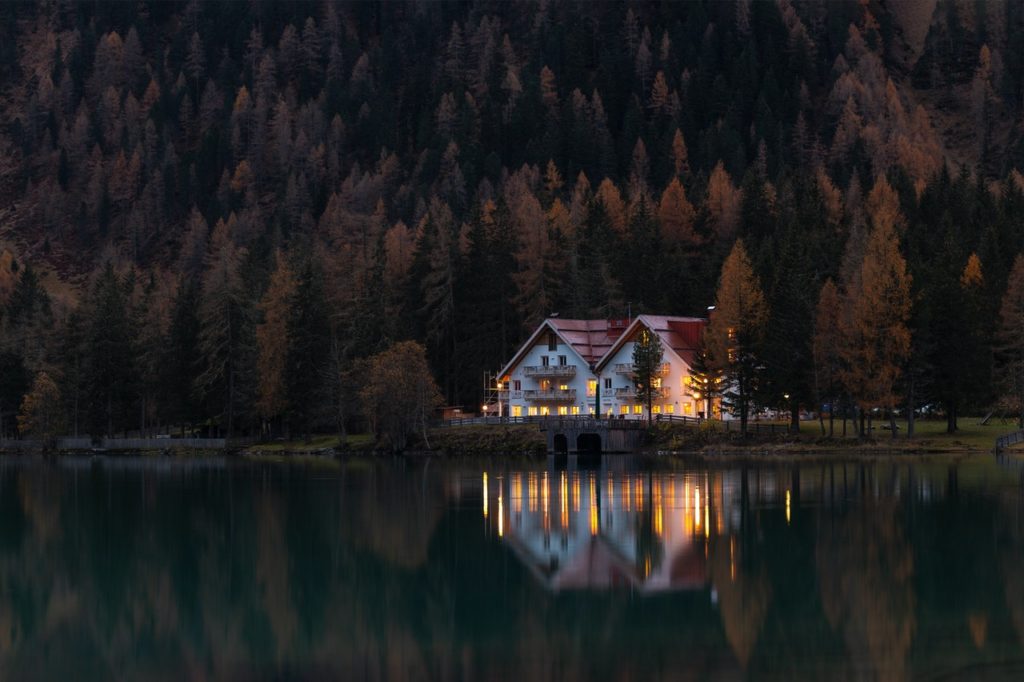
The only problem in the world that you live in however is that nothing you use can be discarded. Meaning, if you use things that have to be trashed, you have to trash them in your house.
So, a few weeks after you purchase your new beautiful house, you start putting all of your trash in a shed in your backyard. You figure out of sight, out of mind.
A few months after you started using your shed as trash, it’s completely full. Moreover, something went wrong and the trash in your shed started leaking into your lake and into your water pipes.
So, your animals are now at risk of being poisoned by that trash, and you have to get an extra water filter to filter out any trash that might have gotten into your water pipes, so you don’t poison yourself and/or your family.
If we all lived in such a world (where nothing can be discarded), I’m 99% certain that every single person in the world would have found a solution that does not include having to trash things in their own house.
That’s because trashing things in your own house (even if it is out of sight) is pure nonsense. It’s not sustainable and can eventually cause you and your family to be poisoned by your own trash.
Unfortunately, this is exactly the world we live in. Our big beautiful house is planet earth. Our sheds are countries like China, some 3rd-world countries like Indonesia, and our beautiful oceans.
In addition, recycling is not as effective as we’d hope for, in countries like the US less than 10% of plastic gets recycled. Another 12% gets incinerated, which adds to the air pollution by pumping more CO2 into the atmosphere.
Just because it is out of sight, doesn’t mean the trash isn’t there. It’s out there in those countries and in our oceans, and it keeps accumulating.
Planet earth is a bit bigger than a 5-bedroom house. But as illustrated with the story above, it’s still pure nonsense because it’s not a sustainable way to live our lives.
If we keep going at this rate, we will leave our kids with a home, they either cannot live in, or one that will poison them, or both.
That’s one of the first reasons we decided to go plastic-free.
Our responsibilities
The people & countries in our world that are most culpable for plastic pollution around the world are mostly rich industrialized nations, with the US & China leading being the highest plastic polluters in the world.
Valva and I live in one of those nations (The US). If we are the people polluting our planet the most, we have more of a responsibility to solve this problem.
Furthermore, to whom much is given, much is expected. We’re both incredibly fortunate to be in a position to be living in a country as great as the US. Because of our good fortunes, we have an even greater responsibility to solve this problem.
Our Politicians
The third reason we decided to go plastic-free is because of the current political situation. From what we have observed, there isn’t much incentive for politicians around the world to find sustainable solutions to many of the problems we face, including climate change.
So, we strongly believe it is up to us (the consumers) to change things for the better. If enough of us stop buying plastic products, companies manufacturing plastic will realize that there’s less and less of a market for plastic, and they will be forced to manufacture less of it or find alternatives.
If we (the consumers) start purchasing more electric cars, gas companies will either need to switch to more sustainable energy sources or risk going out of business.
What We’ve Been Doing
Now that you know why we decided to embark on this plastic-free adventure, we can tell you about some of the things we’ve been doing to go fully plastic-free in our lives.
Stop using plastic bottles
This was a very obvious change for us. In fact, we stopped using plastic bottles even before we decided to go 100% plastic-free.
We decided to add this section to this article because since we decided to go 100% plastic-free, we learned one incomprehensible fact about plastic bottles.
It takes anywhere between 2- 10 liters of water, to make 1 plastic bottle. So, not only are all those plastic bottles get trashed and eventually pollute our environment, but the process of making them is incredibly inefficient.
Additionally, oil is also used to manufacture these plastic bottles. As we know, oil and other fossil fuels are some of the biggest contributors to air pollution all around the world.
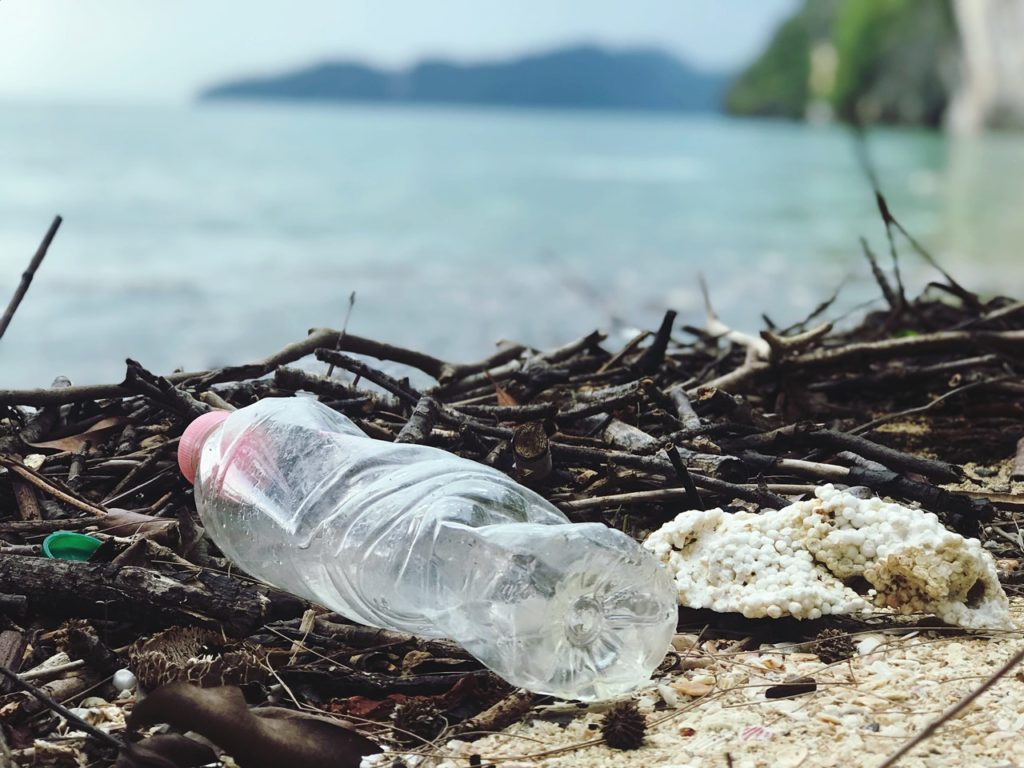
Say no to plastic straws
This one change is also an obvious change for anyone wanting to live a plastic-free life. However, we wanted to include it here because of our experience going out eating in restaurants in the US.
Not only have we stopped using plastic straws, but we have to make it crystal clear to waiters/waitresses or bartenders, at every restaurant that we go to, not to give us plastic straws.
We have to do it because unfortunately in most restaurants we go to in the US, straws come standard in your drinks (alcoholic or not).
So, a tip to anyone living in the US who would like to live a plastic-free life: Make it a point to always tell your waiter/waitress &/or bartender: “No straws please”.
Use Reusable bags when grocery shopping
One of the first things we did in our journey to a plastic-free lifestyle was to switch from single-use plastic bags to reusable grocery shopping bags.
This is one of the easiest ways to reduce the amount of plastic we use in our everyday lives.
I must warn you that it seems like a big/annoying change at first. However, we’ve been doing it for over a year now, and it’s not even a second thought anymore. Moreover, it has not been a huge inconvenience for us.
In fact, the more we’ve done it, the more fun it has become for us. It’s quite a fun exercise to either remember where you have put all of the reusable bags or somehow try to find them before going grocery shopping.
Below are two pictures of some of those reusable bags we’ve been using. The first picture is the bigger bag for all of the groceries. The second picture shows container bags for smaller items such as fruits, nuts, mushrooms, broccoli, etc.
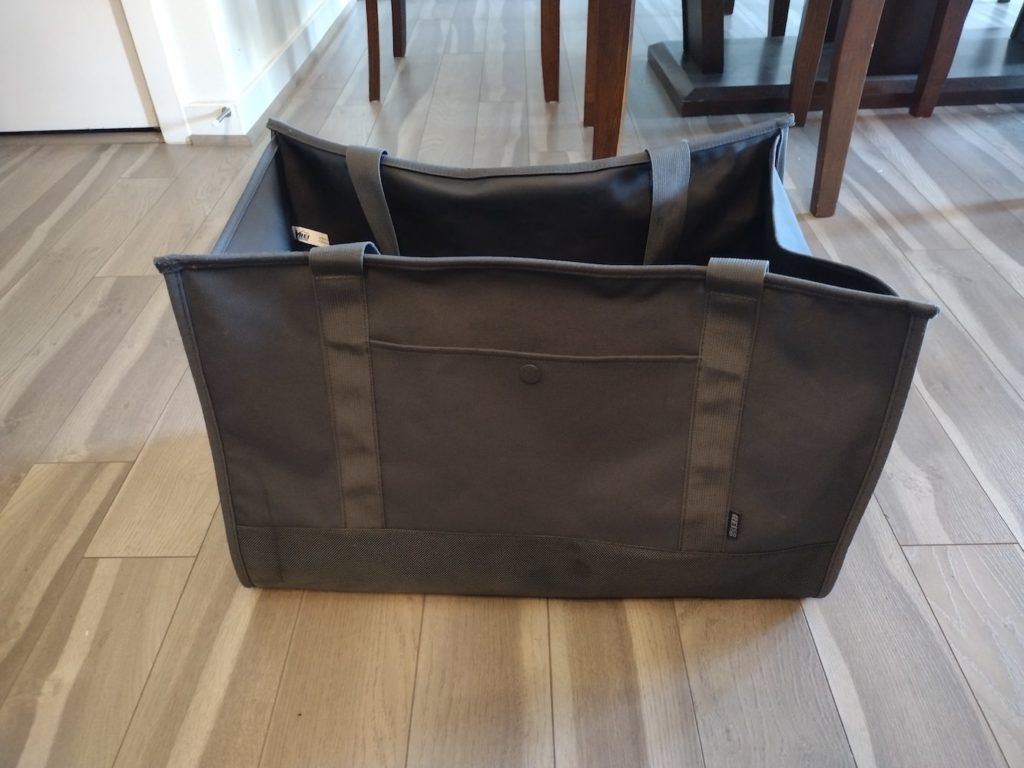
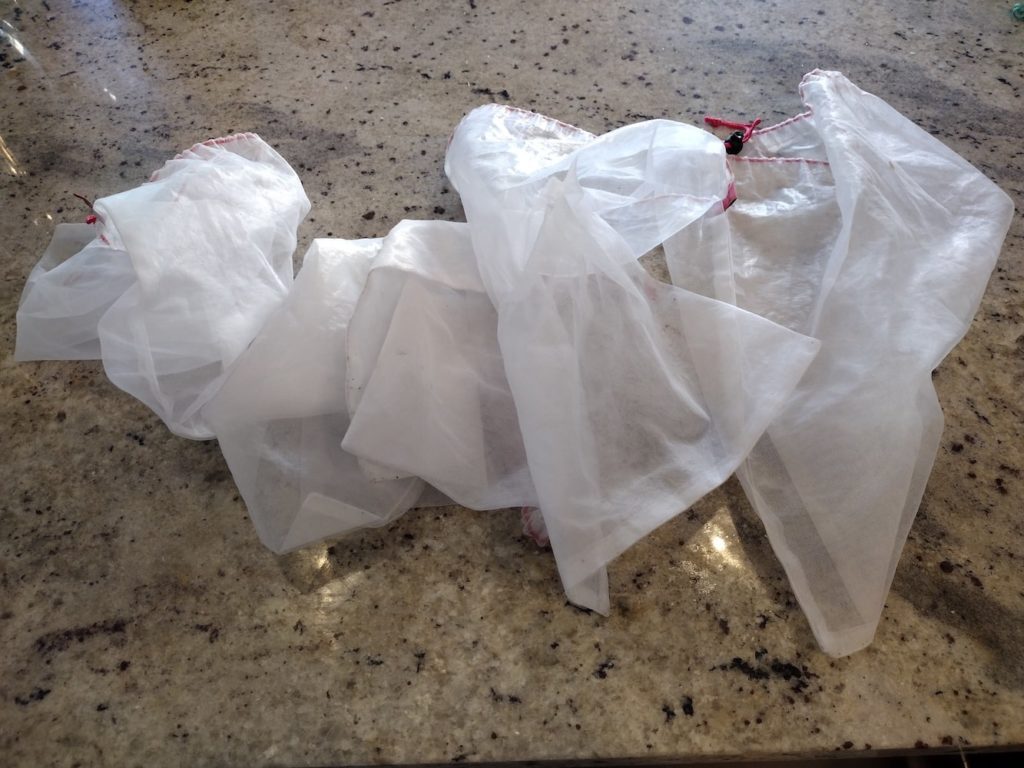
If you’re interested in reusable container bags, you can find them here.
Find a good local organic grocery store
Mid-way through our journey to a plastic-free life, as we were ramping up to reduce our plastic use even more, we wanted to find more alternatives to fruits and vegetables that come in plastic.
Particularly, we wanted to find a place where we could buy mushrooms that did not come in plastics (we love our mushrooms).
After a quick search, we stumbled upon Mom’s Organic market. This place is heaven for anyone wanting to live a plastic-free life.
First, they do not sell plastic bottles. In fact, they have stopped selling those altogether since 2010. That fact tells you something about their commitment to less plastic.
Though they still have many products that come in plastic containers, they are one of the most advanced stores for getting rid of plastics that we were able to find.
Not only do they have mushrooms without plastics, but they also have many more alternatives to some popular products that come in plastic containers.
Here are a few items that you can get from Mom’s Market in reusable bags or containers and/or that do not come in plastic:
- Nuts (Cashews, peanuts, almonds)
- Grains (Rice, quinoa, couscous etc…)
- Pasta
- Nut butter (Cashewe, peanut, almond)
- Paper Toilet
Eliminate Fruits & vegetables in Plastic Containers
The fourth and somewhat easy thing we did after getting rid of single-use plastic bags was to stop eating fruits & vegetables that come in plastic containers.
We both used to (and still do) love strawberries, blackberries, blueberries, and grapes. However, there are many other fruits that are as delicious as the latter, that do not come in plastic containers.
At first, this seemed hard for me (and probably for her also), because I loved those fruits so much (or so I thought). Making the switch forced us to discover and enjoy fruits that were just as delicious as the other ones that I liked so much, and they do not come in plastic.
These fruits are mangoes, kiwis, bananas, peaches, and apples. Kiwis and mangoes are DELICIOUS!!!!
Additionally, we replaced greens like spinach that come in plastic, with lettuce, kale, and broccoli that can be found at grocery stores like Mom’s Organic Market without plastic containers.
Stop going to Starbucks
Over the past couple of years, we’ve done lots of road trips. One of the things we really enjoyed on those road trips was stopping by Starbucks, getting a coffee and a delicious ham & cheese panini and/or croissant.
Then we discovered that the lining of Starbucks cups contain plastics and they did not offer alternatives at the time (Covid). Since we decided to try and remove plastic from our lives, that was a straightforward decision.
In Spain, Starbucks gives customers plastic-free options. In the US, where regulations around plastic are a lot looser, there were no such options. So, we had to stop going to Starbucks altogether.
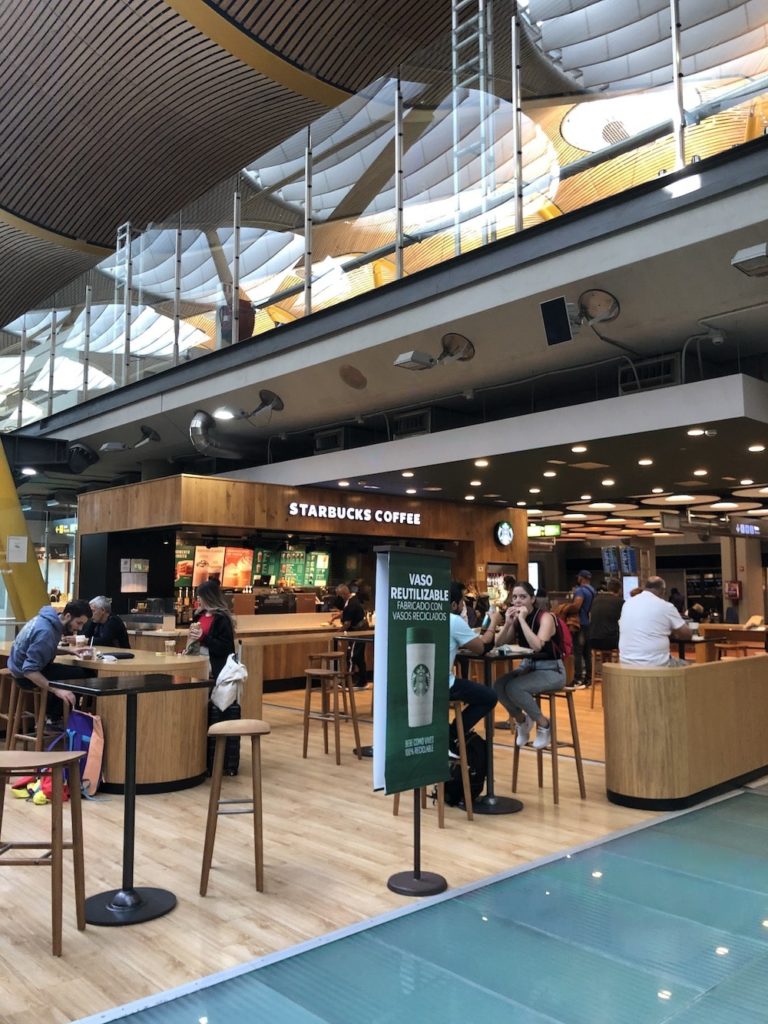
Since cases went down in the US, Starbucks has since brought back the option of using reusable cups. But it’s a little late for us. Maybe we’ve lost the taste, maybe we’re disappointed that Starbucks wouldn’t take more drastic options to remove plastic from the environment.
They have the money, the knowledge to implement better measures that are more environmentally friendly. Like aggressively advertising to their customers that PLASTIC DOESN’T GET RECYCLED. PLEASE BRING YOUR REUSABLE CUPS.
They could also serve dine-in customers with real coffee cups to reduce plastic. Maybe they just don’t have the will because #ProfitsMatterMore.
This is not only the case for Starbucks. We’ve also stopped going to any other stores and restaurants that do not have plastic-free options. It may seem limiting at first, but when you realize that this small sacrifice will contribute to more sustainable businesses and options in the future, it’s all worth it.
Stop buying bread in plastic
I have been baking bread and pizzas on and off for over 20 years of my life. No, I’m not French or Italian. I’m from a small country in central Africa called Cameroon.
But given that insatiable need to bake bread and pizzas my entire life, I’m guessing I might have been French or Italian in a previous life.
So, when we decided to go plastic-free, it was an easy decision for us to eliminate store-bought bread since it almost always comes in plastic.
For our bread, we just make it at home. Making bread is much easier than you think. Especially if you have a sourdough starter.
There are many books and or resources out there to help you get started with making sourdough bread at home. The book that I used the most to get me started is a book by Emili Raffa called Artisan Sourdough Made Simple.
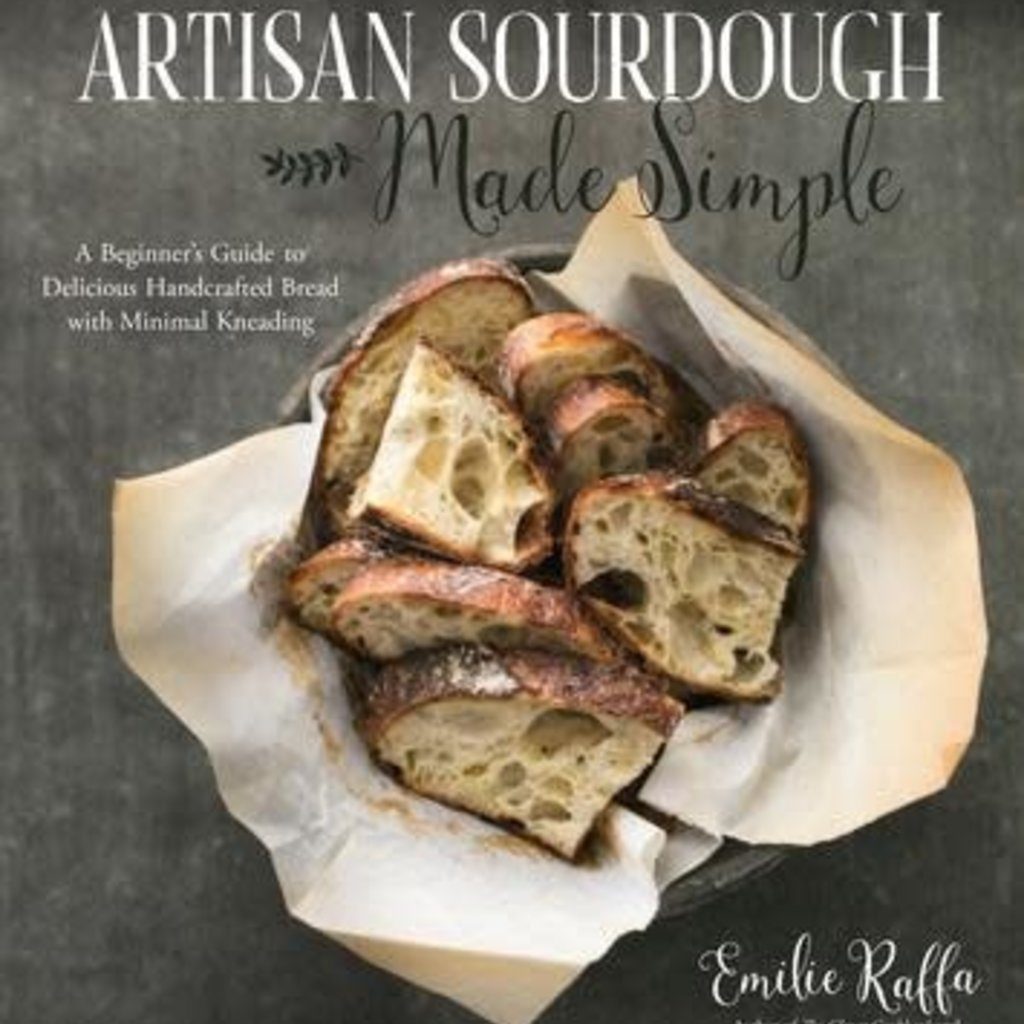
You can also find that book at Target, Barnes & Noble, The Book Repository.
If you decide to start making sourdough bread, and you’re struggling with either your sourdough starter or your sourdough bread, here are two sourdough youtube channels that I have followed with great resources about sourdough starters and sourdough breads: Brian Langerstorm & The Bread Code.
Stop using paper towels
At first, you might think to yourself, why paper towels? What does it have to do with plastic?
First, paper towels come in plastic.
Second, most paper towels in the market today are made by cutting trees. In other words, our use of paper towels contributes a larger air pollution problem caused by deforestation all over the world.
The fewer trees we have, the less CO2 they can remove from the atmosphere, the more our air is polluted.
Stop buying yogurt
We love yogurt and kefir in our household. However, like many other products at the grocery store yogurt comes in (you guessed it) plastic.
We started researching some alternatives and quickly found that yogurt is incredibly easy to make at home using an instant pot. Coincidentally, we happened to own an instant pot.
All it takes is a bit of yogurt as a starter, some milk, and your instant pot.
Here are a couple of recipes that I have used in the past to make yogurt: Homemade yogurt by the Kitchn & Homemade yogurt by Epicurious.
Get rid of traditional toothpaste and mouthwash
Traditional toothpaste and mouthwash come in plastic. So, we found alternatives to the traditional stuff.
There is a company called Georganics that sells toothpaste and mouthwash in tablet forms. They sell a wide array of natural and sustainable oral care products.
We found this product at Mom’s Organic Market.
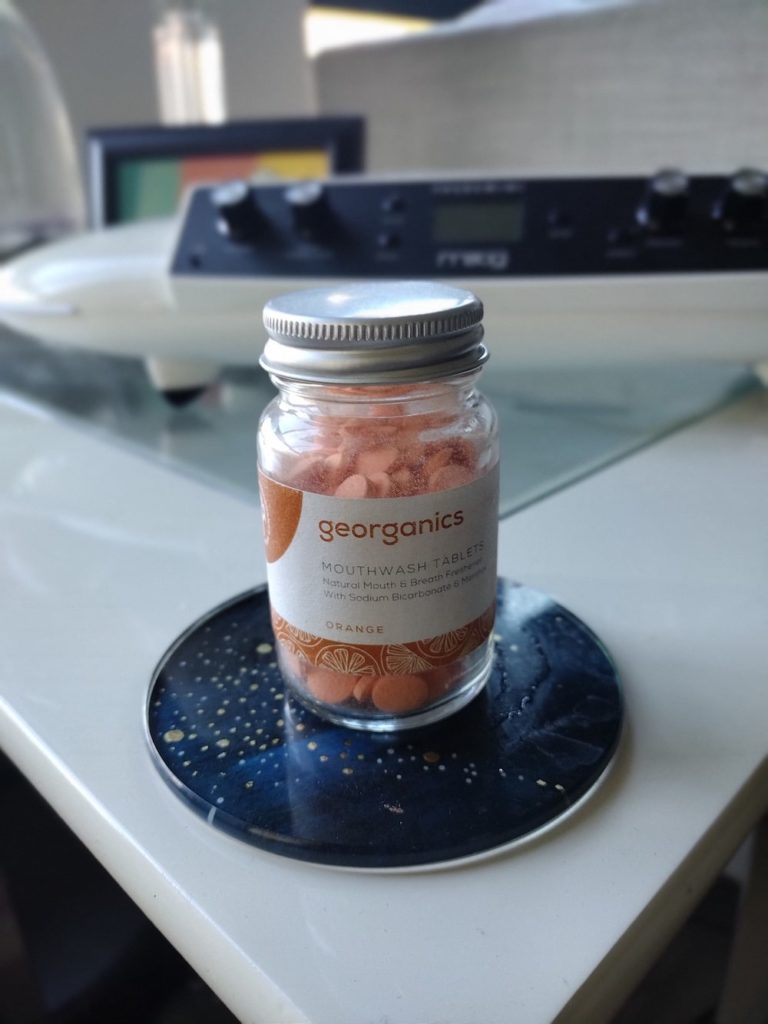
I must warn you, this product doesn’t taste as good as the traditional plastic oral care products on the market. However, the taste is not enough of a deterrent. Plus, again, if I have to choose between a less flavorful toothpaste + a trash-free home and a more flavorful toothpaste + a house full of trash, I choose the former without hesitation.
Substitute Many of our household Cleaning Products
As you may have guessed again, most (if not all) household cleaning products come in plastic. It took a bit of research to find some alternatives to the products we were using.
All purpose cleaners
In our research, we quickly discovered that it was surprisingly easy to make a homemade all purpose cleaner. All it takes is a bit of vinegar, some baking soda, and essential oils for the smell.
It’s easy & fun to make because you can customize your cleaners with essential oils that smell the best to you.
We’ve been using that homemade cleaner for the past few weeks, and thus far, it works.
We also use a glass bottle as our container for the cleaner, the vinegar also comes in a glass bottle, and so does the essential oils.
Dishwashing detergent
Dishwashing pods are all the rage. We bought into that rage and had been using pods for a long time.
Then we wanted to get rid of the plastic containers those pods come in. So, we traded in the pods for dishwasher detergent powder.
We’ve been using this one for a couple of months now. So far so good.
Don’t lose hope
Getting rid of plastic in your life can feel like an insurmountable mountain. It felt like that to us at first as well.
Because of this, many people just throw up their hands and just give up.
I’m imploring you not to. It’s been about 6 months since we decided that we’re going to go 100% plastic-free in our lives.
Here are a few things we have learned along the way.
It’s easier than it feels
One of the biggest barriers to going plastic-free is the thought of having your life significantly disturbed because there are a lot of things you won’t be able to buy and/or enjoy.
Though that is true, making the switch allowed us to do two things:
1. Seriously consider the things we need vs the things we don’t need.
For example, do we really need a stainless steel cleaner vs a stovetop cleaner vs an all-purpose cleaner? I’m not sure we do.
We’ve been using our homemade all-purpose cleaner for our tables, the stovetop, and even our bathtub. So far, it works.
Moreover, do we really need paper towels? So far we found out that we do not.
Sure, you might ask: does that all-purpose cleaner work as well on a stovetop as a cleaner specifically made for stovetop? Maybe not.
But I ask you: If you have a choice between using something that works just well enough but does not add trash to your beautiful home and using something that works better (or slightly better) but consistently adds more trash to your home? Which do you choose?
We went with the former.
2. Helps us discover new foods and new activities
Having to stop eating raspberries, strawberries, and blackberries forced us to find alternative fruits.
In the past few months, we’ve started eating pineapples, mangos, and kiwis instead. These fruits are freaking DELICIOUS. We already knew it because we had tasted all of these fruits before. But we got lazy and just kept going back to the same fruits (berries) over and over again.
Removing berries from our diet forced us to get creative and rediscover the deliciousness of fruits like pineapples, mangos, and kiwis.
When we started on this journey, one of my biggest concerns was how difficult it was going to be to have to use reusable bags for groceries.
However, that transition might have been one of the easiest (and most fun) for me.
It quickly became a habit, and as I mentioned before it has been fun for me to have to remember where all of the bags are, if we have enough of them for a grocery trip etc.
Finally, I love making things (bread, pizzas). So, making that homemade cleaner has been another new fun activity. I get excited at the idea of us running out of our all-purpose cleaner because I start to anticipate what ingredients we can use in the next batch.
Take it one step at a time
Like most things in life, getting rid of plastic isn’t an all-or-nothing type of deal. If you decide to embark on this journey, don’t expect that you’ll get rid of all plastic out of your life from one day to the next. We are not there yet either.
Plastic is too embedded in our lives. If you keep that in mind, you’ll have a greater chance at success because you won’t be tempted to give up if things get too hard (they might).
Another thought to avoid is to compare yourself to others that might be more advanced on their journey than you might be.
Remember this: If you get started on this journey, you’re already a winner. This is because you have realized that trashing your own home is not a sustainable way to live your life. No matter how fast you get to zero plastic in your life, you’re on your way to reducing how much you’re trashing your own home.